Day and night.
Every morning, here on Earth, the sun rises in the East – and the day begins.Later it sets in the West – and it becomes night.
But have you ever wondered why that happens?
Humans once believed it was because the sun travelled across the sky – and they used its trajectory to do lots of things, like tell the time.
But the sun is a star.
All the other planets that make up our solar system – including Earth – orbit around it.
Earth is approximately 149 million kilometres away from the sun.
It travels around the sun at around 107,000 kilometres per hour,
and takes 365 days to complete a full orbit – that’s a whole year!
So how come days don’t last half a year where you live?
That’s because the Earth is a sphere that constantly rotates on its axis:just like a basketball player spinning a ball on their finger – but at over 1,500 kilometres per hour!
It takes 24 hours for the Earth to complete a full rotation:and when it does, half of the Earth is exposed to the light of the sun,and the other half is in shadow.
Earth is tilted at a 23.5 degree angle – so where you live determines how long or short your days and nights are.When the North Pole is tilted toward the sun, it’s summer in the Northern Hemisphere, where the UK is located,but winter in the Southern Hemisphere.
Around the 21st of June in the UK we have the longest day of the year,and around the 21st of December is the shortest – when we get no more than 8 hours of daylight.
But if you live near the equator, you get almost 12 hours of sunlight every day, no matter what time of year it is.When our part of the Earth turns toward the sun, we call it morning.
As the Earth continues to rotate, the sun appears to rise above the horizon line;and by midday, it has reached its zenith, the time it’s strongest, in the sky.
It gets darker in the evening, when we rotate away from the sun.
And night draws in when we spin away from the sun completely.
You can learn more about day and night by experimenting with fruit!
Start by drawing a line around an orange to represent the equator,then carefully push a metal straw through it at a 23 degree angle – and draw a dot where you live.
Now shine a light on the orange and spin it around.
Can you work out what time of day or night it is where you live when you stop spinning?
After the experiment, you can peel the orange and enjoy a healthy snack!
Video summary
This short animated film explores day and night.
Day is when the sun rises and daylight is cast. Night is when the sun sets and it gets dark.
This film explores the difference between day and night and demonstrates how the rotation of the earth's axis contributes to making seasons such as summer and winter.
This short film is from the 91Čȱ¬ Teach series Explain, Explore, Expand.
Teacher Notes
Explain
It is the combination of the Earth’s shape, your location on Earth, its rotation on its axis along with its (orbit) around the Sun that gives us our experience of longer, warmer days in summer and shorter colder days in winter.
Let's explore how all these aspects give us day and night.
Key Facts
- The Sun is a star at the centre of our solar system. For us, it is approximately 150 million km (93 million miles) away.
- The Earth orbits (goes around) the Sun, and this takes (365.25 days) or 1 year.
- The top half of the Earth, in proportion to the equator, is the Northern Hemisphere, and the bottom half of the Earth is called the Southern Hemisphere. These meet in the middle at the Earth’s widest point along an imaginary line we call the Equator. Where you live will determine the amount of daylight you will get, and how it changes over the year. Here in the UK, we live in the Northern Hemisphere.
- The Earth rotates (spins) on its axis. This axis is an imaginary line that runs through the Earth. The axis is off by about 23.5 degrees, so the Earth is tilted. The Earth completes one full rotation (spin), every 24 hours. We call each complete rotation of the Earth a day.
- We do not feel the earth’s rotation because we do not feel constant motion. It takes approximately 24 hours for the earth to rotate on its axis (spin once) because the Earth’s circumference is approx. 40,075 km (24000 miles) this means you are spinning at over 1670 km per hour (1000 miles per hour) to complete one rotation that is nearly twice the speed of a jet aircraft and over 3 times the speed of a formula 1 car.
- Due to that rotation, at any time during a day part of Earth (half) is facing the Sun and will have daylight and the other half is facing away and will not see daylight.
- The Earth’s circumference is approx. 40,075 km (24000 miles) this means you are spinning at a constant speed, over 1670 km per hour (1000 miles per hour) to complete one rotation.
- Specifically, as the Earth is not a perfect sphere, from North pole to South pole (known as the meridional circumference) Earth is only 40,008 km (24,860 miles) around.
- It is the combination of the Earth’s shape, your location, on Earth, its rotation on its axis along with its (orbit) around the Sun that gives us our experience of longer, warmer days in summer and shorter colder days in winter.
- At different times of the year, the Earth is in a different position in its orbit, so although the tilt of the Earth does not change, the Earth’s position relative to the Sun does.
- In summer, the position of the Earth in its orbit around the Sun means that the Northern hemisphere tilts towards the Sun. This gives us more daylight in the UK because it is visible for longer making it warmer.
- In winter, the Earth is on the opposite side of its orbit around the Sun and the Northern Hemisphere tilts away giving us less daylight and it is therefore colder.
- The further you move away from the Equator both north and south, the greater the differences in daylight hours in summer and winter. The north and south poles get the greatest extremes.-In summer because of the Earth’s tilt, the North Pole gets almost 24 hours of daylight for months, whilst at the South Pole, it is dark for months. In winter, the Earth is on the opposite side of its orbit. So, the situation reverses.
- This video references the historic belief that placed Earth at the centre of the Universe and how that belief was challenged.Further information can be found here: .
Explore
Where to pause?
- 01:26 - pause the video. Ask the children how to identify when it is the middle of Summer and Winter in each hemisphere. Answer: Whichever pole and hemisphere is tilted more towards the Sun will be experiencing Summer and so the other pole (and hemisphere) will be experiencing Winter.
- 01:28 - pause the video. Ask the children to identify the Northern and Southern Hemispheres.
- 01:35 - pause the video. Ask which of the poles is getting most of the light or none of the light from the Sun and what does that mean?
- 01:58 - pause the video. Pause and ask why is daylength almost always the same at the equator.
Activities / Experiments
- Activity 1: Get one child to stand in the middle of the room with a torch and another child to hold a globe/ball at an angle and spin it. As the ball spins the child with the ball moves to the other side of the room keeping the tilt of the ball the same to show the difference between winter and summer.
- Activity 2: Children can keep a diary of what time the sun sets over a month.
- Activity 3: Children could use a shadow stick to see which way the Sun appears to move.
Fun Facts
- A sphere is perfectly round. The Earth may look like a sphere; however, it is not a perfect sphere, because of the force of the Earth’s rotation, the earth bulges and the North and South Poles are slightly flat. This bulge at the equator creates a difference of about 43km (27 miles) compared to the poles.
- The Earth does not orbit the Sun in a perfect circle; it has an elliptical orbit, which means that it is sometimes closer to the Sun than at other times.
- Do you know that in winter in the Northern Hemisphere, the Earth is closer to the Sun than it is in summer? In early January, the Earth's about 147.5 million km away from the Sun. Whilst in early July, the Earth and the Sun are about 152.6 million km apart. That is a difference of just over 5 million km. So, the tilt of 23.5 degrees has a real impact!
Expand
Discussion questions:
- If looked at from above, is the Earth spinning clockwise or counter clockwise?
- How can we tell which way is East and West so we can work out North and South?
- Ghana is almost on the equator. In summer on the longest day, the daylight lasts for 12 and half hours and in winter on the shortest day, the daylight lasts for 11 hours, a difference of 1 and half hours all year. Why is that?
- In summer in the Northern Hemisphere on the longest day (the 21st June), London gets over 16 and half hours (16 hours and 40 minutes) of daylight, whilst the Shetland Islands get over 2 hours more at nearly 19 hours. Why is that?
Learning Objectives:
- To Use the idea of the Earth’s rotation to explain day and night and the apparent movement of the sun across the sky.
National Curriculum objectives:
- England: To use the idea of the Earth’s rotation to explain day and night and the apparent movement of the sun across the sky.
- Scotland: To describe how the Earth spins around its axis in 24 hours resulting in day and night.
- Demonstrates understanding of how the Earth takes one year to completely orbit the sun.
- Demonstrates understanding of how the tilt of the Earth on its axis as it circles the sun causes the pattern of the seasons and changes to the number of daylight hours over the course of a year.
- Northern Ireland: To explore time patterns, for example, morning, afternoon, evening, days of the week.
- Wales 2020: To understand the daily and annual movements of the Earth and their effect on day and year length.
Sources
How are shadows made? video
What are shadows? How are they made? What factors affect their size and shape? Let’s explore shadows in more detail – and learn how to turn your shadow into a clock!

Changing environments. video
This film explains how important environments are, what factors can change the conditions of different environments and how that can affect the things living in them.
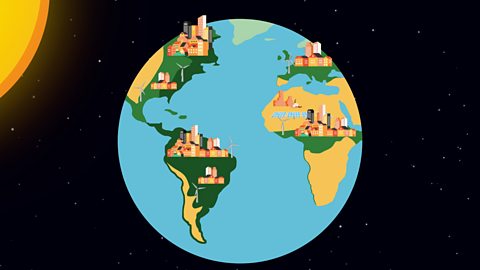
What is inheritance? video
This film explains how inheritance works in humans, animals and plants, and explores how humans use inheritance to their advantage, to produce animals and plants that are more productive.
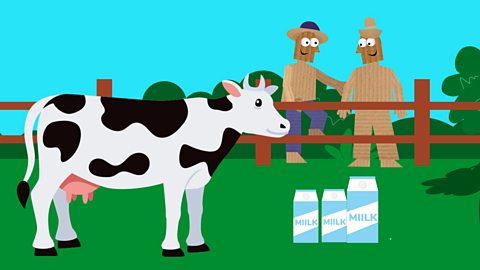
How do ecosystems work? video
This film explains the difference between biotic and abiotic, terrestrial, freshwater and ocean water ecosystems and looks at the effect of weather.
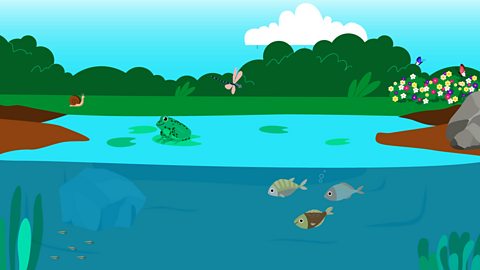
What are air and water resistance? video
This film explains the difference between water and air resistance and demonstrates examples of how resistance plays a part in our everyday life.
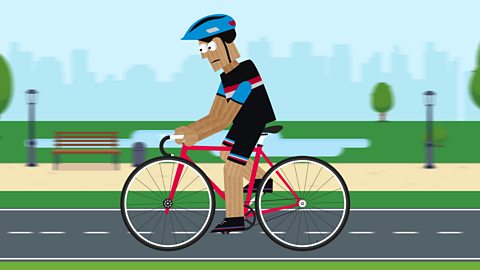
Mechanisms. video
This film explains what a mechanisms are, using examples of where they are used and how they make our lives easier.

What should I do with my rubbish? video
This film explains the impact waste is having on our planet and how we can work to reduce our rubbish to make a difference.
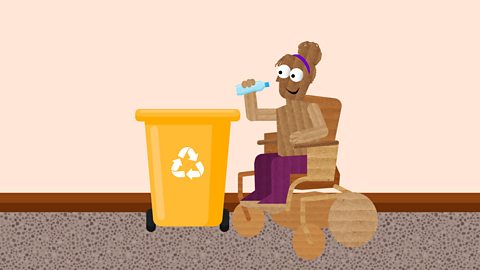
How to use scientific equipment. video
This film explains how we can use science equipment to develop our scientific abilities.
